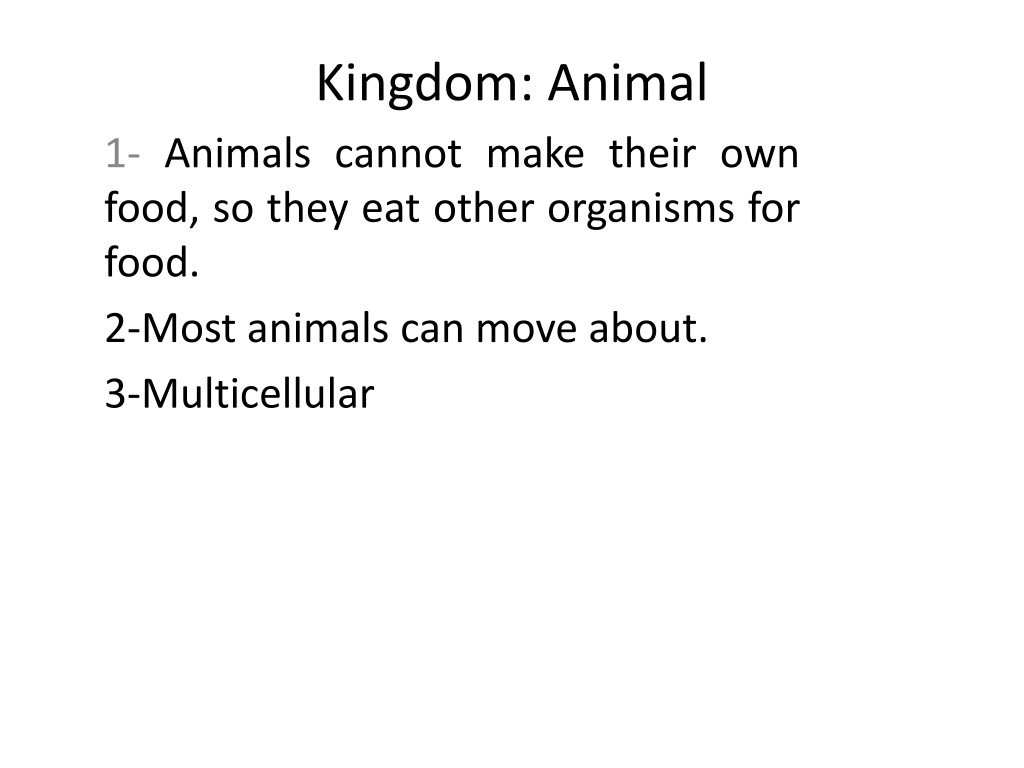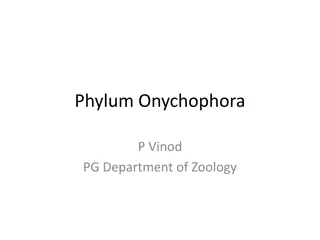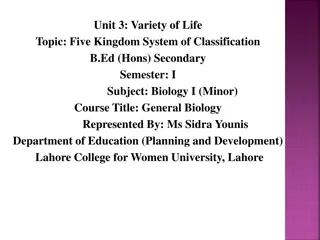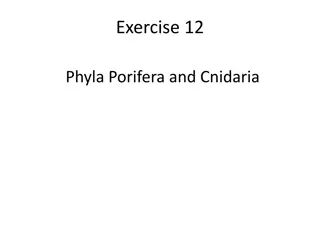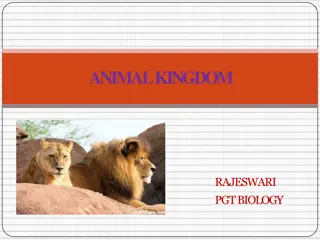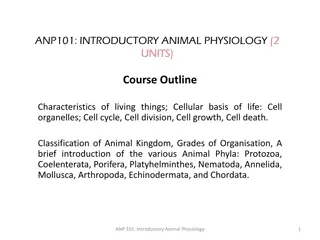Overview of Animal Kingdom's Phyla and Characteristics
Animals in the Kingdom Animalia have diverse characteristics and are classified into different phyla based on specific traits and features. This includes Porifera (sponges), Cnidaria (jellyfishes), Platyhelminthes (flatworms), Nematoda (roundworms), Annelida (earthworms), Mollusca (snails, octopus), Arthropoda (butterflies, spiders, scorpions, cockroaches), and Echinodermata (sea cucumbers, sea urchins, sea stars). Each phylum exhibits unique body symmetries and adaptations for survival. Explore the fascinating world of animal diversity!
Download Presentation

Please find below an Image/Link to download the presentation.
The content on the website is provided AS IS for your information and personal use only. It may not be sold, licensed, or shared on other websites without obtaining consent from the author. Download presentation by click this link. If you encounter any issues during the download, it is possible that the publisher has removed the file from their server.
E N D
Presentation Transcript
Kingdom: Animal 1- Animals cannot make their own food, so they eat other organisms for food. 2-Most animals can move about. 3-Multicellular
The phylum of Animal Kingdom 1- Porifalso named sponges:means animal that contains holes,are sessile feeders(struck to the ground eating what comes near them). Body symmetry: asymmetric Ex: yellow Tube spongy. era (Sponges) (ex. Sponge)
2- Cnidaria (ex. Hydra) Contains cnidocyte or Venomous cells that helps collect and transmit sensory information . body symmetry: radial ex :Jelly fishes
3- Platy helminthes (flat worms) (ex. Liver fluke) also named flat worms lack a coelom and other body cavities, can be found in marine of fresh water. Body symmetry: bilateral Ex: tapeworms .
4- Nematoda (round worms) (ex. Ascaris ) also named round worms, very long and narrow. Body symmetry: bilateral Ex: Ascaris .
5-Annelida (ex. Earth worm) have long bodies that have segments divided externally by shallow rings. Body symmetry: bilateral Ex: earthworms
6- Mollusca (ex. Octopus & Snail) One of the largest phylum composed of many diverse organisms, all have a soft body, body structure composed of three parts. Body symmetry: bilateral Ex: snails , octopus
7-Arthropoda (ex. Butterfly, Spider,Scorpion & Cockroach) Have jointed appendages (body extensions that give them a wide range of controlled motion) , most successful because they are the most divers, living in a great range of habitats. Body symmetry : bilateral.
8-Echinodermata (ex. Sea cucumber , Sea urchin & Sea star) means spiky skin, dwells at the bottom of the ocean floor. Body symmetry: radial
9- Chordate Vertebrate (ex. Fish, Frog & Birds) Has internal skeletal rod , acomplete digestive System, a ventral heart, a closed blood system and a tail Body symmetry: bilateral.
